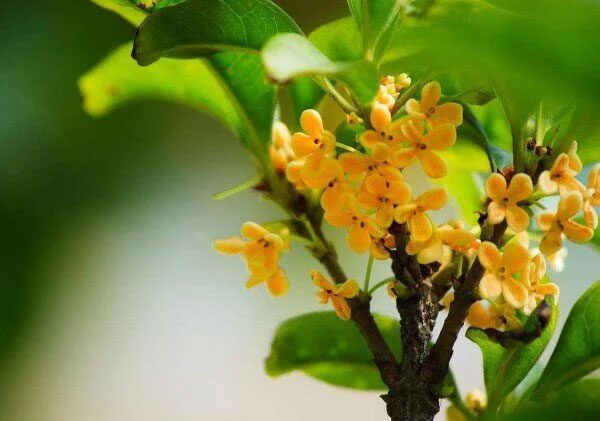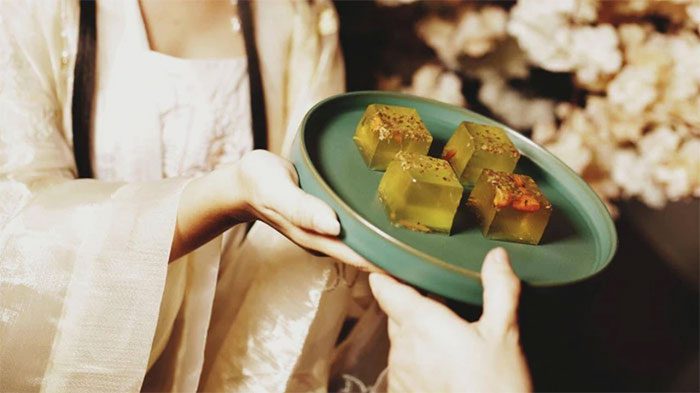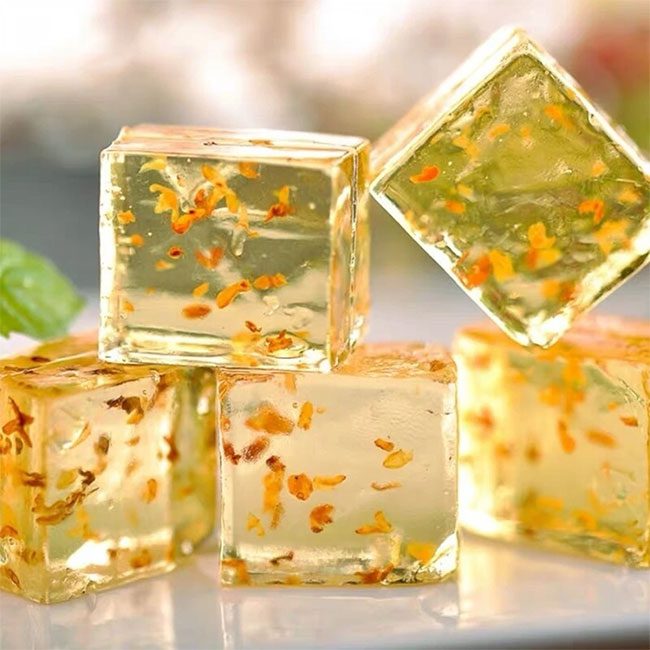To strengthen their status, ancient concubines were not hesitant to employ special methods to win the emperor’s favor. One of the ways concubines used was fragrance. The flower discussed below was always the top choice for concubines wanting to maintain a delightful scent.

Ancient Chinese concubines often used a particular flower to keep their bodies fragrant, like Osmanthus. (Image: Sohu)
The Flower That Gave Concubines a “Fragrance for Miles”
The flower used for skincare by the beautiful women of the imperial court mentioned above is Osmanthus. In many Chinese historical dramas, Osmanthus is frequently depicted as being used to make Osmanthus cake. These cakes were commonly offered to the empress and concubines by palace maids during the cool autumn weather, which also coincided with the peak blooming season of Osmanthus flowers.
Why did ancient concubines choose this particular flower as their beauty secret?
Osmanthus, also known as sweet osmanthus or by its scientific name Osmanthus fragrans, is a plant native to Asia. Osmanthus has a warm, spicy flavor and a light, fragrant aroma reminiscent of ripe apricots.

Osmanthus is the “secret” of beauty for ancient concubines. (Image: Sohu).
Traditional Chinese medicine suggests that the warm nature of Osmanthus helps alleviate menstrual cramps, beautify skin, and treat acne. Drinking Osmanthus tea daily aids in detoxification, body purification, mental relaxation, and balancing the nervous system, reducing stress and fatigue. Osmanthus also has significant benefits for respiratory issues such as sore throat, excessive phlegm, asthma, and persistent cough.
With its sweet fragrance, regular use of Osmanthus not only enhances beauty but also allows the body to exude a captivating aroma. Hence, ancient Chinese concubines favored Osmanthus to attract the emperor’s attention with their natural scent.
Osmanthus has such a unique fragrance that it is also known as the “flower of miles of fragrance.” Brewing Osmanthus tea or infusing flowers with honey to create a detoxifying drink that beautifies the skin and calms the mind is one of the simplest methods often practiced by concubines. Osmanthus tea has a naturally light flavor, a refreshing quality, and a delicate aroma that is easy to drink. The tea is a light yellow, clear liquid.

Concubines often used dried Osmanthus flowers or those infused with honey as a detoxifying beverage to enhance their beauty. (Image: Sohu)
The “Secret” of Beauty Over 300 Years Old
In addition, Osmanthus is also used to make a famous pastry often found in noble families and palaces, known as Osmanthus cake (Osmanthus cao).
According to Baidu, Osmanthus cake is a unique pastry that has existed for over 300 years. Legend has it that the poet Yang Shen, while on his way to take the imperial examination, dreamed he ascended to the moon. In his dream, he saw a magnificent palace and a giant Osmanthus tree, releasing a fragrant aroma. He dug up the tree and brought it back to earth. By the end of the Ming Dynasty, a street vendor named Liu Jiatang in Xindu was inspired by this story and created Osmanthus cao (Osmanthus cake).

Osmanthus is also used to make the famous pastry in the imperial palace, Osmanthus cake. (Image: Sohu)
During the blooming season of Osmanthus, palace maids would gather fresh Osmanthus flowers and dry them or soak them in saltwater to reduce the spicy and bitter flavors, then infuse the flowers with sugar or honey.
Osmanthus cake is made from a mixture of ingredients including Osmanthus nectar, rice flour, glutinous rice flour, rapeseed oil, and sugar (either white sugar or maltose). Everything is kneaded into a soft dough and then steamed. After that, dry flour is sprinkled on top to prevent sticking, or it is wrapped in a wet cloth for additional kneading until the dough becomes smooth and glossy. The final step is cutting the dough into square pieces and lightly oiling them to complete the process. With a shimmering appearance, each Osmanthus cake is celebrated like a precious gem when displayed on a plate.
At first glance, this pastry may seem simple, but achieving its distinctive aroma and appealing appearance requires the chef to meticulously select each tiny Osmanthus flower, as even slightly yellowed flowers can directly impact the flavor and color of the cake. Crafting a delicious Osmanthus cake requires the chef to carefully follow numerous steps.

Concubines particularly favored Osmanthus cake for its delicious taste and beauty benefits. (Image: Sohu)
After hundreds of years, the recipe for Osmanthus cake has evolved into many different methods. Depending on the varying proportions, there are also different procedures and cooking methods such as steaming, frying, grinding, mixing, molding, and cutting…
Previously, Chinese Osmanthus cakes were typically found only at royal banquets or in wealthy households, but today this pastry has become very popular in the daily lives of the Chinese, serving as an enticing snack or dessert.
- Why did the concubines buried alive with Qin Shi Huang not close their legs after being entombed?
- Why do concubines have to lie still for eunuchs to touch their bodies after the emperor’s visit?
- A series of photos from the harem of Emperor Guangxu of the Qing Dynasty: The hunchbacked empress, plump concubines


















































